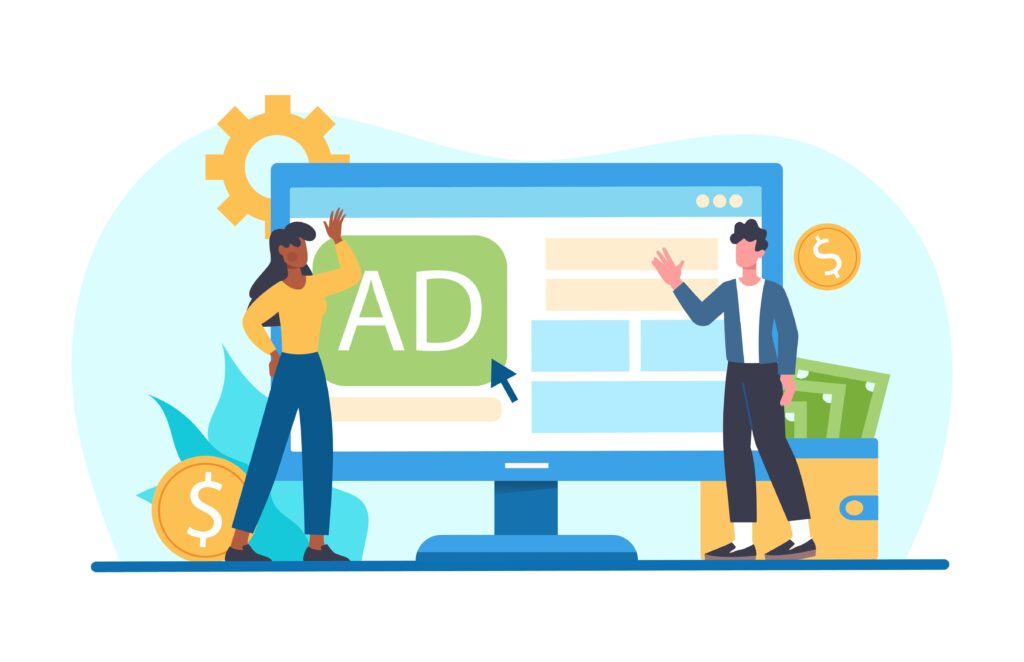Pay Per Click
Fostering Customer Loyalty Through Digital Advertising
Digital advertising is most commonly thought of as a way to attract new customers to your business. But there is an incredibly underutilized opportunity to target existing customers to enhance their loyalty to your bank.
According to OutBound Engine, the cost of acquiring a new customer is 5x higher than the cost to retain an existing customer. So, focusing on nurturing existing customer relationships is certainly a beneficial investment. Strengthening relationships with your existing customers ensures you are not losing money on preventable attrition. Though there are many ways to maximize the effectiveness of your digital advertising budget, here are some tips to effectively tailor your PPC advertising campaigns specifically toward customer retention.

Utilize Your Customer Lists
If you have a customer relationship management (CRM) software, you likely already have a database of existing customers. This is your bread and butter for advertising to your existing customer base. If you do not yet have a CRM, consider investing in one. CRMs personalize customer journeys, streamline sales processes, and maintain up-to-date customer data that is essential for marketing research and advertising.
In order to utilize your customer lists in PPC advertising, simply export your customer lists from your CRM into a CSV file and import them into Google Ads and Facebook. Ensure your lists are segmented into necessary categories, such as newly acquired customers vs business clients. Different market segments vary greatly, so separating them will ensure that you are tailoring the right message to the right group of customers. Now, you are ready to create effective campaigns that will target only these existing customers.

Personalize your Messaging
Ensure your ad copy and creative are personalized to existing customers.
A big mistake many companies make is using the same exact ad for all their campaigns, regardless of the audience they are targeting. Customizing your copy enhances the ad experience for the user and results in more clicks and more conversions. If you signed up for a food delivery subscription service, you wouldn’t want to be shown an ad inviting you to sign up for the subscription again. Instead, you would want to be shown an ad about the benefits of leveling up your subscription or new recipe ideas.
Similarly, ensure your copy and creative differ between customer lists. Advertising to your business clients will be different than advertising to your personal checking account customers. Bottom line: always tailor your ads to your specified audience.
Introduce new products and features.
Actively advertising offerings that existing customers may not be aware of is an advantageous way to cross-sell and upsell your products. Suppose you have a new app that just launched, and there has been a low download rate. Advertise your new app by adding a mobile app ad extension to your Google Search campaign, prompting customers to download the app. Or, if you have a new home equity loan product available, create a campaign targeting existing customers who fit the home buyer demographic and are not utilizing this product yet. Many times, customers may not know the full list of products your bank offers unless you advertise it directly to them.
Speak to the purpose of your bank.
Your customers want to be reassured that they are banking with an institution that gives back to the community and is socially and environmentally responsible. Worry less about being product-focused in your messaging and focus more on what your brand stands for. This is not to say that you should not advertise products within your ad. Just make sure the primary message is about helping the customer and the community.
Remember to be human.
Humanizing your language in your ad copy is essential in creating a successful advertising campaign, regardless of who you are targeting. Sounding too robotic or gimmicky will portray your brand as being impersonal, which can harm your brand image. So, ensure your ad copy is engaging and approachable.
Rule of thumb: after writing your ad copy, say it aloud. Would you say this to a customer in person? If so, you are on the right track. If not, try rethinking your messaging to be more conversational in tone. Humans prefer humans to robots any day!

Target New Customers
Research by the Bank Administration Institute Research Group shows that the first three months of a customer’s journey is the most important for customer retention. So, targeting your new customers in PPC advertising is a great way to connect with your new customers and grow that relationship.
The best way to execute this is by first segmenting out your new customers in a customer list in your CRM. Ensure you have automation in place that automatically adds and removes customers from this list when they reach a certain cycle in the customer journey. For example, make an automation to add them to the new customer list when they open an account, and another one to remove them after 6 months. Then, simply export this list to Google Ads and Facebook to begin targeting these customers.
Reminder: Static customer lists do not automatically update once exported out of your CRM, so ensure to upload the updated customer lists into your advertising platforms every month or so to avoid targeting the same list continuously.
The “2-2-2” Approach
It’s important to not overdo it, especially in the beginning of your relationship with the customer. If customers are bombarded with advertisements after signing on, it may appear spammy and, quite frankly, desperate, which could harm or terminate your customer relationship. The American Bankers Association recommends using the “2-2-2” approach, in which a communication is implemented 2 days, then 2 weeks, then 2 months after an account opening. This can apply to any form of communication, from emails to phone calls to text messages to paid advertisements. Using a mix of these will prevent customers from feeling over-targeted within the same medium.

Use Ad Data as Market Research
As with any type of digital marketing campaign, it is imperative to track your results. To successfully analyze which existing customer campaigns are yielding more conversions, connect your Google Analytics (GA4) to your Google Ads account and set up attribution modeling. When this is done, you will be able to attribute ads to conversions and gain insight into which ads are performing better.
This may also inform you on which product offerings to prioritize. For example, let’s say you are targeting existing customers in two different advertising campaigns: One is advertising a new online savings account, and the other is targeting a savings account where you must visit a branch to open the account. If the conversion rate for the online savings account ad significantly outperforms the in-person savings account ad, this may be an indication to prioritize resources for the online account.
Interpreting advertising data from your existing customer base will inform you of what customers are seeking, what they are missing, and what they are loving. Listening to your customer’s needs will help you optimize and refine your priorities.

Let’s Chat!
At BankBound, our experienced Digital Marketing Strategists are equipped with the industry knowledge and expertise to help maximize the effectiveness of your digital advertising campaigns. Schedule a no- pressure call with a strategist to learn more about how BankBound can become an invaluable extension of your marketing team.

